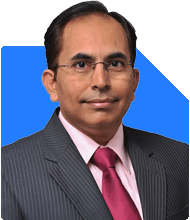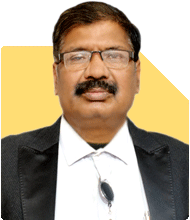Hello,
I need guidance for 2 concerns, since I have resigned and existing from NPS I have to compulsorily purchase annuity for 80% of NPS value, which companies annuity plan is best, Aditya Sunlife, LIC, India first, ...pls guide as the purchase value will be around 12Lacs.
2- I'll be getting around 10Lacs lumpsum, where to and how to invest considering the fact I may not go back to work ever again and I want this funds to grow and create a good wealth for my future, as of now I am 44 years old.
Kindly guide
Ans: Annuity plans provide regular income post-retirement. They are crucial for financial stability when you stop working. Since you need to purchase an annuity for 80% of your NPS value, selecting the right plan is essential.
Evaluating Annuity Providers
Aditya Sun Life
Aditya Sun Life is known for its flexible options. They offer different annuity plans, allowing you to choose based on your needs. Their customer service is also commendable.
LIC (Life Insurance Corporation of India)
LIC is a trusted name in insurance. They provide a variety of annuity plans with reliable returns. LIC’s reputation for stability makes it a popular choice.
IndiaFirst Life Insurance
IndiaFirst offers competitive annuity rates and several plan options. Their plans are designed to cater to diverse needs, ensuring you find a suitable one.
Key Factors to Consider
Annuity Rates
Compare the annuity rates offered by different providers. Higher rates will ensure better returns.
Payout Frequency
Choose between monthly, quarterly, or annual payouts based on your requirements.
Plan Features
Evaluate additional features such as joint life annuity, return of purchase price, and inflation-adjusted payouts.
Customer Service
Good customer service is essential for smooth claim processing and query resolution.
Provider Reputation
Select a provider with a solid reputation for reliability and financial stability.
Investing the Lumpsum of Rs 10 Lakhs
Investment Goals and Risk Tolerance
You’re 44 and planning not to return to work. Your investment strategy should focus on growth and wealth creation. Balancing risk and returns is crucial.
Diversified Portfolio
Mutual Funds
Investing in mutual funds can provide good returns. Actively managed funds are preferable over index funds due to the potential for higher returns through expert management.
Debt Funds
Debt funds offer stable returns with lower risk. They are suitable for preserving capital and earning moderate returns.
Gold
Gold is a reliable investment for diversification. It acts as a hedge against inflation and market volatility.
Equity Funds
Equity funds have higher risk but offer substantial returns over time. Diversify across sectors to mitigate risk.
Regular Funds vs. Direct Funds
Benefits of Regular Funds
Investing through a Certified Financial Planner (CFP) offers several advantages. They provide expert guidance, ongoing portfolio management, and personalized advice. This ensures your investments are well-managed and aligned with your goals.
Disadvantages of Direct Funds
Direct funds may seem cost-effective due to lower expense ratios. However, without professional guidance, you may make suboptimal investment decisions, potentially affecting your returns.
Investment Strategy
Systematic Investment Plan (SIP)
Consider setting up SIPs for consistent investment in mutual funds. This mitigates market volatility and promotes disciplined investing.
Asset Allocation
Maintain a balanced mix of equity, debt, and gold. This diversification reduces risk and enhances potential returns.
Rebalancing
Regularly review and rebalance your portfolio to align with your risk tolerance and financial goals.
Risk Management
Emergency Fund
Set aside a portion of your lump sum as an emergency fund. This ensures liquidity for unforeseen expenses.
Insurance
Ensure you have adequate health and life insurance coverage. This protects you and your family from financial hardships in case of emergencies.
Long-term Perspective
Wealth Creation
Investing with a long-term perspective is key to wealth creation. Patience and consistent investing yield significant returns over time.
Avoiding Market Timing
Trying to time the market can be risky. Instead, focus on staying invested through market cycles for better outcomes.
Final Insights
Investing your NPS proceeds and lump sum wisely can secure your financial future. Evaluate annuity providers based on rates, features, and reputation. For your lump sum, diversify across mutual funds, debt funds, and gold. Engage a Certified Financial Planner for professional guidance, ensuring your investments are aligned with your goals. Maintain a balanced portfolio and focus on long-term wealth creation.
By taking these steps, you can build a robust financial plan that supports your aspirations and ensures a secure future.
Best Regards,
K. Ramalingam, MBA, CFP,
Chief Financial Planner,
www.holisticinvestment.in














.jpg)













